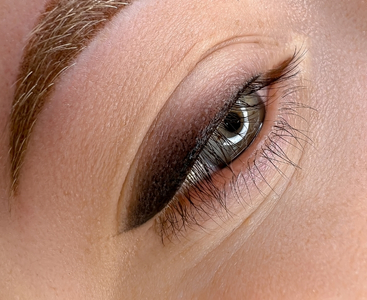LIPOSUCTION
Liposuction
Liposuction is the removal of excess fat tissue in the body by surgical methods. It is an operation that is applied to individuals who do not have obesity problems but have regional adiposity problems. It is possible to give the desired shape to the body by applying liposuction. This method, which can be applied to areas such as hips, hips, abdomen, waist, arms, back; also called liposuction.
Liposuction is a treatment method applied by plastic surgeons who are experts in their field. Excess weight, which causes many physical and psychological problems in individuals, can be eliminated with this method. At the same time, it is possible to achieve a more aesthetic shape of the body. During the operation, the fat tissue is sucked with the help of instruments called cannula. In order to give the body an aesthetic shape, the procedure should be performed by a plastic surgeon who is experienced in the field and has knowledge of anatomy.
What is Liposuction?
Fat removal, also known as liposuction, is formed by the combination of the words “lipo” and “suction”. This nomenclature, which derives from the word lipo meaning fat in English, is the absorption of excess fat in the body with the help of surgical instruments.
Liposuction, which has been applied since the 1980s, is among the most frequently applied aesthetic surgical operations today. This procedure, which is applied for cosmetic purposes, is also a method used in medically necessary surgical applications. However, cosmetic liposuction, which is used to reshape the body and make the appearance more aesthetic, is more commonly known. Excess fat tissue in the body is absorbed using instruments called cannulas. In this way, fat cells are permanently destroyed. However, liposuction should not be considered a weight loss procedure. It is not an appropriate treatment option because it has no effect on weight gain in cases such as obesity.
Who Can Have Liposuction?
Patients who are suitable for liposuction are generally individuals who have more intense lubrication in a certain part of the body. Applying to liposuction in bariatric surgery is not a very effective treatment option. This option is often used to purify the body from excess fat and reshape it. For this reason, it is a more correct approach to apply to people who do not have serious weight problems and do not respond to regional weight loss methods.
Hips, abdomen, hips, waist, arms, knees; These are areas where stubborn lubrication can be seen. Fat tissue in these areas may not be removed despite weight loss. In such cases, it is possible to apply liposuction to prevent regional lubrication that is difficult to remove.
Liposuction is not considered as a weight loss method; instead, it should be used to reshape body contours. It is recommended that individuals who have a general weight problem, except for the regional stubborn fat problem, lose weight with appropriate methods. For this, a diet that will provide balanced and healthy eating habits and at the same time regular exercise will be very beneficial. Subsequently, the fat tissues that cannot be removed with diet and sports can be destroyed by absorption by liposuction.
Who Cannot Perform Liposuction?
- People with chronic diseases that the procedure will pose a risk
- Individuals who are pregnant or have just given birth
- It is not recommended to apply liposuction in patients whose skin elasticity is lost due to age.
The suitability of the procedure in individuals with chronic diseases is determined as a result of the examination and tests performed by the specialist physician.
How is Liposuction done?
Liposuction is a surgical technique applied while patients are under anesthesia. Local anesthesia or general anesthesia can be applied. Generally, patients are put into sleep with sedation. In this way, the operation is completed without feeling any pain or pain during the operation.
After the anesthesia is applied to the patients, the adipose tissue in the operation area is made fluid by various methods. For this, surgical incisions of 1-3 mm in size are reached under the skin. Fat tissue is loosened and fragmented with thin tubes called cannula. With the help of cannulas, which are vacuum devices, reverse pressure is applied to the area. In this way, adipose tissue is absorbed and excreted from the body.
After the fat removal that will provide the desired shaping is completed, the incisions are closed with surgical sutures and the area is tightly bandaged.
How Much Fat Can Be Removed With Liposuction?
Before the application, the plastic surgeon prepares a sketch in order to create the most suitable and aesthetic shape for the body. The area where the oil will be taken is determined by drawing the lines and how the new shape will be. In a liposuction application, it is possible to remove up to 10% of the patient’s body weight. In cases requiring higher volume, the need for intensive care arises in the postoperative period.
What Should Be Considered After Liposuction?
After the liposuction operation, specially designed corsets are used by the patients. The duration of use of these corsets may vary for the patient. The amount of fat removed and the skin characteristics of the patient may shorten or lengthen the period. Generally, 4-8 weeks of corset use is sufficient.
Edema or bruising may occur in the operation area. During the healing process, this situation will pass by itself over time. After liposuction, your doctor will ask you to come for a control examination after a certain period of time. It is very important that this examination is not interrupted. Generally, it is possible to return to normal life within 4 weeks after the operation.
Liposuction is not a procedure applied for weight loss. For this reason, if patients do not pay attention to a controlled diet and nutrition programs, it is possible to see weight gain and regional fatness again. Patients are advised to pay attention to a balanced and healthy diet after liposuction. It may be necessary to repeat the application, especially in people who gain and lose weight frequently.










